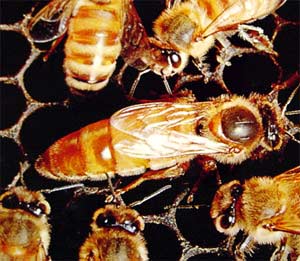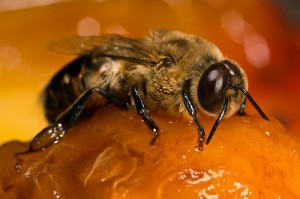20 Day Queen Emergence?
No matter how prepared that I think I am for Spring in the Apiary, I always seem to bee beehind! To date, I have created 22 Nucs, which is quite a number given it is only March 17! I have also supered a large number of my hives around Richmond, Va and actually had a queen hatch in my hand (I wonder if I’ll EVER see that again…)
The hives are healthy, period. Many folks have been warning that the bees will have eaten up all of their stores. I had two problem hives (one at Westover and one at Sherwood Forest), but both went into the Winter with low stores. So, warm or cold Winter, these gals were going to have a problem (both made it with a little help). But, not a single one of my other hives came close to eating all of their stores. Instead, I would say that I have to PULL frames of honey on most hives just to give the queen space to lay! The bottom line is that I will probably ignore the warnings that ‘a warm Winter means they eat more stores’ going forward. It probably is a worry to the folks that take so much honey that they have to feed in the Fall/Winter, but it appears to me that my strategy already deals with this possible obstacle (although I doubt we’ll see another warm Winter like this for some time).
On that note, I created a Nuc off of a strong hive last Sunday (3/11/2012). This time of year, I create the Nucs in the same yard as the hive. My hives are building up so quickly, they they seem to be able to give 2 to 3 frames of brood without missing a beat. Add a shake of Nurse bees, and the Nucs come out strong. Well, the one from last Sunday wasn’t acting right. It usually takes 2 to 3 days to begin seeing a forager or two and I wasn’t seeing sqat. So, I took a peak. Somehow, I must have mostly shaken out foragers into the Nuc, as there were VERY few bees. I decided to go back into the original hive and shake again. All three frames of foundation, from last Sunday, were 75% drawn and 30%+ full of nectar as of Thursday! These were Medium frames, but that’s a huge build up in my opinion. I had no idea this amount of nectar was coming in. What was the takeaway? I needed to get supers on all hives, which I have pretty much done as of today.
The final (and wildest, to me) bit of news came from my two early Nucs. I created both of them on Feb 26. In my mind, with the cool nights, these queens should have hatched on or around the 13th. Maybe the 14th if the cluster couldn’t keep the hive warm enough. So, I went in to check both Nucs for the first time today. The primary goal was to find open queen cells. If I spotted the queen, all the better.
Nuc 1 revealed nothing. This Nuc was a risk, as I had not found eggs but had seen 1 day old larva. I had been wondering if a Nuc could really get itself together in time to make a queen with nothing but larvae that would be too old in a day or less. The queen may have emerged and they may have torn the queen cell down, but I sort of doubted it. I would give it a few more days to be sure.
Nuc 2 revealed what I expected. Three queen cups and one of them open. After a brief span, I could see the queen prancing around the frame. Interestingly enough, I noticed two unopened queen cells – neither of them damaged (like you would see if the first hatching queen had stung her on the side). This was odd, as the Bee Math didn’t add up. This was 20 or so days after I created the Nuc! I figured that the queens were probably dead or maybe I just missed where they had been stung by the queen that hatched.
A few hours later, I got to thinking about the Nuc without any evidence of a queen and decided to take a risk. Why not cut out those two other swarm cells and put them in the Nuc? Couldn’t hurt, right? Both parent queens are good and the Nuc is ‘for sale’, so a queen offspring from either parent would be fine. So, I went back into the Nuc and cut out the two swarm cells (fortunately, both were about an inch apart) and began carrying them to the other Nuc (across my yard, maybe about 150 yards). As I looked at the small patch of wax, 3 nurse bees and two queen cells, I noticed a head poking through a small crack in one! Good lord, this queen cell not only had a living queen, but she was coming out right now! The next part is amazing. In less then 5 seconds, she came all the way out!
So, this poor queen comes out thinking she has a new hive to rule, which turns out to be a patch of wax about 3 inches across with 3 Nurse bees and another queen cell! I doubt there are many queens who are greeted with such a small domain in the first few seconds as an adult!
At any rate, I was set on a course and I just prayed that she would keep hauling around the small wax while I made my way to the Nuc, which she did. When I set her in the hive, it was very hard to tell if they attacked her or accepted her. Several bees seemed to probe her and then she went down between the frames. I left the other cell on top of the frames, just to be safe. In retrospect, I should have taken the other cell and created a quick Nuc with her. But, so much was happening so quickly that I really didn’t have time to think (or what little thinking I did was not very efficient!)
Regardless of the outcome, that was definitely exciting.


